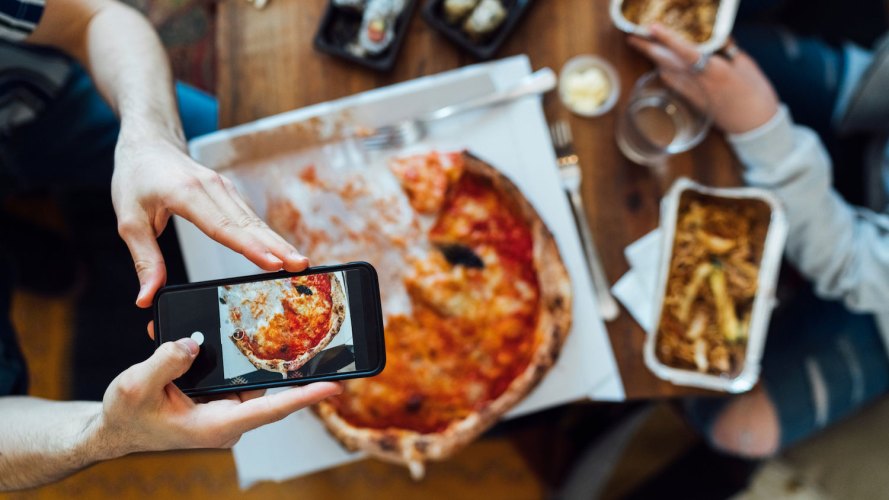In 1989, nearly thirty years after its founding, Domino’s Pizza introduced the first new product in its history, the pan pizza. In the years since, it steadily rolled out new food products that pushed it to the top of the global pizza food chain. But the real story of innovation at Domino’s has less to do with food and more to do with its relentless pursuit of technology to revolutionize ordering and delivery.
I caught up with Art D’Elia, Domino’s executive vice president and chief marketing officer, to ask him how he thinks about technology, retail innovation, and digital transformation. D’Elia came to Domino’s after marketing, brand, and innovation stints at CPG giants PepsiCo and Danone.
Want more retail leadership insight?
Find retail leaders’ strategy tips for technology and retail innovation. Get inspired by new ideas to create the best omni-channel experiences for your customers.



“I’ve been focused on trying to accelerate the pace of digital transformation and innovation,” D’Elia said. “We’re in a category that is rapidly evolving, and we have a new set of competitors that we refer to as the aggregators, like Uber Eats, Grubhub, and DoorDash, so you have to evolve your business model. The question is how do we change more rapidly to make sure we continue to be at the cutting edge of technology and digitization, but also are continuing to be really customer centric in our approach.”
Ordering and delivery made easy
We’ve heard for years that the way to win with consumers is not with great products (although that is always important) but with great experiences that make buying easy, innovative, even fun. Since it launched its first website in 1996, Domino’s has set a high-water mark for using technology to do just that. Today, customers can order through Domino’s mobile app, a smart watch, Twitter, Slack, smart TV, Ford Sync, Amazon Alexa, Facebook Messenger, and more. With “zero-click ordering,” fans with a “pizza profile” open the app, which automatically orders their preferred pizza after a 10-second clock runs down. Nearly 70% of Domino’s sales are made through digital channels in the U.S.
Delivery innovation has put Domino’s ahead of the competition. Some examples: GPS hotspots that let you get your pizza delivered to you at parks, beaches and other non-addressed locations, and delivery by e-bike. More recently, Domino’s has been testing autonomous vehicles and drones for delivery. And while many other restaurants were hit hard by COVID-19, Domino’s thrived while others faltered during the pandemic. It had already been testing a way for customers to pick up an order without entering the store, so it was able to quickly get carside delivery up and running nationwide.
Customer data drives retail innovation
One of the ways D’Elia helps Domino’s focus on customer centricity is by curating, analyzing, and segmenting customer data. Through its loyalty program (more than 25 million active users) and myriad digital channels, Domino’s has amassed a database of 85 million unique customer profiles.
“It’s a huge luxury to be able to have that data because it opens up many more opportunities to use digital tools that allow us segment consumers and do precision marketing in a way that is very difficult to do on the supplier side, like in consumer packaged goods.”
Customer data, and the ability to precisely measure the impact of their order and delivery innovations, also drives the buy-in needed to launch innovation initiatives in the first place.
98% of Domino’s U.S. stores are franchise-owned. These franchisees need to entrust a centralized organization to invest in initiatives that will drive traffic and business.
“We need to be able to measure that for them and come back to them with a business case,” he said. “It’s a luxury that we have the [customer] data, so we can measure very precisely the impact of these innovations. Once you define your objectives upfront — are you trying to drive incremental orders, take cost out of the business, increase frequency with existing customers- you can take specific actions then measure against it. We are very disciplined in that analysis, and that’s been crucial in the high hit rate that we’ve had on successfully launching a lot of innovations over the last decade.”
More opportunities for growth and retail innovation
D’Elia is bullish about voice technology to further take friction out of the ordering process and help them interact with customers through the ordering and delivery process.
“We’ve become famous for our pizza tracker, and voice is another technology that can enhance the tracker experience and really create more transparency between us and the customer. It’s an area where there’s going to be great innovation.”
Domino’s emphasis on technology has helped the company achieve more than half its global sales through digital, and nearly 70% in the U.S. As a marketing executive, D’Elia is relentlessly focused on using technology to make things easier for customers — a practice every retail leader can learn from.
“If I were to choose one word to describe retail I’d say focused,” said D’Elia. “A lot of critics have said the retail industry has been slow to transform, but I think that’s changing. Coming into the pandemic, retailers refocused their efforts on being customer-centric, and marketing is at the center of that…Marketing is still about understanding consumers and appealing to them, making sure everything is about making the experience better,” said D’Elia. “That’s not specific to Domino’s. It’s category agnostic.”
Customer Experience in Retail: Data Drives Everything
Retailers are expanding their use of data and analytics to offer superior customer experiences and drive brand loyalty. Discover how and why.



This article is part of our “Becoming Retail” series, where top retail leaders from great brands share how their personal values, professional influences, and industry experience inform their leadership.




























